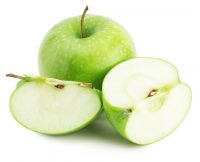Almost as soon as cannabis became recreationally legal, the public started to ask questions about the safety of products being offered by dispensaries – especially in terms of pesticide contamination. As we can see from the multiple recalls of product there is a big problem with pesticides in cannabis that could pose a danger to consumers. While The Nerd Perspective is grounded firmly in science and fact, the purpose of this column is to share my insights into the cannabis industry based on my years of experience with multiple regulated industries with the goal of helping the cannabis industry mature using lessons learned from other established markets. In this article, we’ll take a look at some unique challenges facing cannabis testing labs, what they’re doing to respond to the challenges, and how that can affect the cannabis industry as a whole.

The Big Challenge
Over the past several years, laboratories have quickly ‘grown up’ in terms of technology and expertise, improving their methods for pesticide detection to improve data quality and lower detection limits, which ultimately ensures a safer product by improving identification of contaminated product. But even though cannabis laboratories are maturing, they’re maturing in an environment far different than labs from regulated industry, like food laboratories. Food safety testing laboratories have been governmentally regulated and funded from almost the very beginning, allowing them some financial breathing room to set up their operation, and ensuring they won’t be penalized for failing samples. In contrast, testing fees for cannabis labs are paid for by growers and producers – many of whom are just starting their own business and short of cash. This creates fierce competition between cannabis laboratories in terms of testing cost and turnaround time. One similarity that the cannabis industry shares with the food industry is consumer and regulatory demand for safe product. This demand requires laboratories to invest in instrumentation and personnel to ensure generation of quality data. In short, the two major demands placed on cannabis laboratories are low cost and scientific excellence. As a chemist with years of experience, scientific excellence isn’t cheap, thus cannabis laboratories are stuck between a rock and a hard place and are feeling the squeeze.
Responding to the Challenge
One way for high-quality laboratories to win business is to tout their investment in technology and the sophistication of their methods; they’re selling their science, a practice I stand behind completely. However, due to the fierce competition between labs, some laboratories have oversold their science by using terms like ‘lethal’ or ‘toxic’ juxtaposed with vague statements regarding the discovery of pesticides in cannabis using the highly technical methods that they offer. This juxtaposition can then be reinforced by overstating the importance of ultra-low detection levels outside of any regulatory context. For example, a claim stating that detecting pesticides at the parts per trillion level (ppt) will better ensure consumer safety than methods run by other labs that only detect pesticides at concentrations at parts per billion (ppb) concentrations is a potentially dangerous claim in that it could cause future problems for the cannabis industry as a whole. In short, while accurately identifying contaminated samples versus clean samples is indeed a good thing, sometimes less isn’t more, bringing us to the second half of the title of this article.
Less isn’t always more…

In my last article, I illustrated the concept of the trace concentrations laboratories detect, finishing up with putting the concept of ppb into perspective. I wasn’t even going to try to illustrate parts per trillion. Parts per trillion is one thousand times less concentrated than parts per billion. To put ppt into perspective, we can’t work with water like I did in my previous article; we have to channel Neil deGrasse Tyson.
The Milky Way galaxy contains about 100 billion stars, and our sun is one of them. Our lonely sun, in the vastness of our galaxy, where light itself takes 100,000 years to traverse, represents a concentration of 10 ppt. On the surface, detecting galactically-low levels of contaminants sounds wonderful. Pesticides are indeed lethal chemicals, and their byproducts are often lethal or carcinogenic as well. From the consumer perspective, we want everything we put in our bodies free of harmful chemicals. Looking at consumer products from The Nerd Perspective, however, the previous sentence changes quite a bit. To be clear, nobody – nerds included – wants food or medicine that will poison them. But let’s explore the gap between ‘poison’ and ‘reality’, and why that gap matters.
 In reality, according to a study conducted by the FDA in 2011, roughly 37.5% of the food we consume every day – including meat, fish, and grains – is contaminated with pesticides. Is that a good thing? No, of course it isn’t. It’s not ideal to put anything into our bodies that has been contaminated with the byproducts of human habitation. However, the FDA, EPA, and other governmental agencies have worked for decades on toxicological, ecological, and environmental studies devoted to determining what levels of these toxic chemicals actually have the potential to cause harm to humans. Rather than discuss whether or not any level is acceptable, let’s take it on principle that we won’t drop over dead from a lethal dose of pesticides after eating a salad and instead take a look at the levels the FDA deem ‘acceptable’ for food products. In their 2011 study, the FDA states that “Tolerance levels generally range from 0.1 to 50 parts per million (ppm). Residues present at 0.01 ppm and above are usually measurable; however, for individual pesticides, this limit may range from 0.005 to 1 ppm.” Putting those terms into parts per trillion means that most tolerable levels range from 100,000 to 50,000,000 ppt and the lower limit of ‘usually measurable’ is 10,000 ppt. For the food we eat and feed to our children, levels in parts per trillion are not even discussed because they’re not relevant.
In reality, according to a study conducted by the FDA in 2011, roughly 37.5% of the food we consume every day – including meat, fish, and grains – is contaminated with pesticides. Is that a good thing? No, of course it isn’t. It’s not ideal to put anything into our bodies that has been contaminated with the byproducts of human habitation. However, the FDA, EPA, and other governmental agencies have worked for decades on toxicological, ecological, and environmental studies devoted to determining what levels of these toxic chemicals actually have the potential to cause harm to humans. Rather than discuss whether or not any level is acceptable, let’s take it on principle that we won’t drop over dead from a lethal dose of pesticides after eating a salad and instead take a look at the levels the FDA deem ‘acceptable’ for food products. In their 2011 study, the FDA states that “Tolerance levels generally range from 0.1 to 50 parts per million (ppm). Residues present at 0.01 ppm and above are usually measurable; however, for individual pesticides, this limit may range from 0.005 to 1 ppm.” Putting those terms into parts per trillion means that most tolerable levels range from 100,000 to 50,000,000 ppt and the lower limit of ‘usually measurable’ is 10,000 ppt. For the food we eat and feed to our children, levels in parts per trillion are not even discussed because they’re not relevant.
A specific example of this is arsenic. Everyone knows arsenic is very toxic. However, trace levels of arsenic naturally occur in the environment, and until 2004, arsenic was widely used to protect pressure-treated wood from termite damage. Because of the use of arsenic on wood and other arsenic containing pesticides, much of our soil and water now contains some arsenic, which ends up in apples and other produce. These apples get turned into juice, which is freely given to toddlers everywhere. Why, then, has there not an infant mortality catastrophe? Because even though the arsenic was there (and still is), it wasn’t present at levels that were harmful. In 2013, the FDA published draft guidance stating that the permissible level of arsenic in apple juice was 10 parts per billion (ppb) – 10,000 parts per trillion. None of us would think twice about offering apple juice to our child, and we don’t have to…because the dose makes the poison.
How Does This Relate to the Cannabis Industry?
The concept of permissible exposure levels (a.k.a. maximum residue limits) is an important concept that’s understood by laboratories, but is not always considered by the public and the regulators tasked with ensuring cannabis consumer safety. As scientists, it is our job not to misrepresent the impact of our methods or the danger of cannabis contaminants. We cannot understate the danger of these toxins, nor should we overstate their danger. In overstating the danger of these toxins, we indirectly pressure regulators to establish ridiculously low limits for contaminants. Lower limits always require the use of newer testing technologies, higher levels of technical expertise, and more complicated methods. All of this translates to increased testing costs – costs that are then passed on to growers, producers, and consumers. I don’t envy the regulators in the cannabis industry. Like the labs in the cannabis industry, they’re also stuck between a rock and a hard place: stuck between consumers demanding a safe product and producers demanding low-cost testing. As scientists, let’s help them out by focusing our discussion on the real consumer safety issues that are present in this market.
*average of domestic food (39.5% contaminated) and imported food (35.5% contaminated)





Hi Amanda,
First, I want to say thanks for writing this column in general. Your ability to boil down complex scientific concepts is much appreciated and I have enjoyed reading your work, though I’ve been remiss in not commenting to say so.
However, I think you’re leaving out a very important point in regard to the topic under discussion in this piece; that is, we don’t know what permissible exposure levels are in regard to cannabis, which is most commonly smoked or vaporized, not to mention the various other manners of ingestion that are being developed. I’ve even seen products such as suppositories that worry me quite a bit in terms of the potential for contamination, as I understand that internal tissues absorb chemical compounds at rates at much greater rates than, for example, dermal application. In general, there’s much research to be done – that will take years – to determine what amount of pesticidal chemicals are safe on cannabis that is smoked, vaporized, eaten, applied to the skin, or whatever, but we’re not there yet.
Given that we don’t know what permissible exposure levels are, it’s my opinion that producers should not employ restricted use pesticides at all. However, in states that have pesticide testing programs we are using “action levels” drawn from food, even though that data should not be bridged as, again, the modes of ingestion are vastly different. This tacitly allows producers to employ restricted use pesticides, which can pose a risk to workers even if residue levels are extremely low on the final product (and possibly inconsequential, but again we don’t know if they are or not). Still, your point that labs can’t detect zero is valid and – again, thanks to the writings of you and others in your area of the field – I do understand the tough position that these labs are put in. Unfortunately, the threat of strict, scientifically-valid testing is right now one of the few that works to get growers that might otherwise use chemical pesticides that are not legal to apply to cannabis to stop doing so. Yet, like you said, it’s not really feasible to ask labs to detect infinitesimal amounts of dozens of chemicals and still expect quick, affordable testing services.
To solve the pesticide problem, labs cannot be the only gatekeepers. We need increased inspections coming from Ag departments to complement the QA testing. If Ag departments (or health departments or whomever) in states with legal cannabis had adequate resources to conduct thorough and random inspections of producers, then I believe that labs would not have to bear the exclusive burden of making sure that contaminated product is not reaching market. Unfortunately, it’s my experience that such departments are overburdened and it’s just too much to keep up with inspecting hundreds of licensees without additional resources. Again, though, due to our lack of knowledge and the potential public health risks, I think thresholds for pesticides should be as low as feasibly possible for things to function, with any detection of residues of pesticides illegal to apply to cannabis (which is most of them) triggering an inspection by a state Ag department, to protect worker safety as well as that of the consumer.
Overall, I think it’s important to always note the fact that the permissible levels established by the FDA for foods cannot yet be applied to cannabis and associated products at this time with scientific certainty. Additionally, it should be noted that while we have great food safety compared to much of the rest of the world, the FDA has major gaps in their approach to pesticide contamination. It’s my understanding that while active ingredients are regulated, additives and adjuvants that are part of pesticide formulations are not. So, to bring it back to cannabis, much ado has been made about myclobutanil, the active ingredient in the fungicide Eagle 20EW, but I have not seen anyone mention that the active ingredient in question is suspended in a solution containing petroleum distillates. Even without the myclobutanil, I wouldn’t want to spray something petroleum-based on plants then have people smoke them. That final point is a bit off-topic, but I wanted to illustrate how much we don’t know about some of the things that we ingest. People should know the risks and, in this case, where so much is unknown, it is hard to say what is safe and what is not, so my opinion is to err on the side of caution. Again though, I feel that the best way to do so is a combination of proactive, regular inspection of production, combined with sensible, effective QA testing by labs; the labs cannot solve this problem on their own, nor should they be expected to. Unfortunately, these legal cannabis programs are somewhat experimental and, in many cases, actively under construction and we do not yet have all the tools in place to carry out ideal regulatory approaches.
Thanks once more for your work. Keep up the writing.
3 boys farm in Ruskin Florida presented a cannabis grow model completely organic using no pesticides that is self sustained. This should be what we are striving for, with both our food and medicine https://youtu.be/FnRpv4rlClg